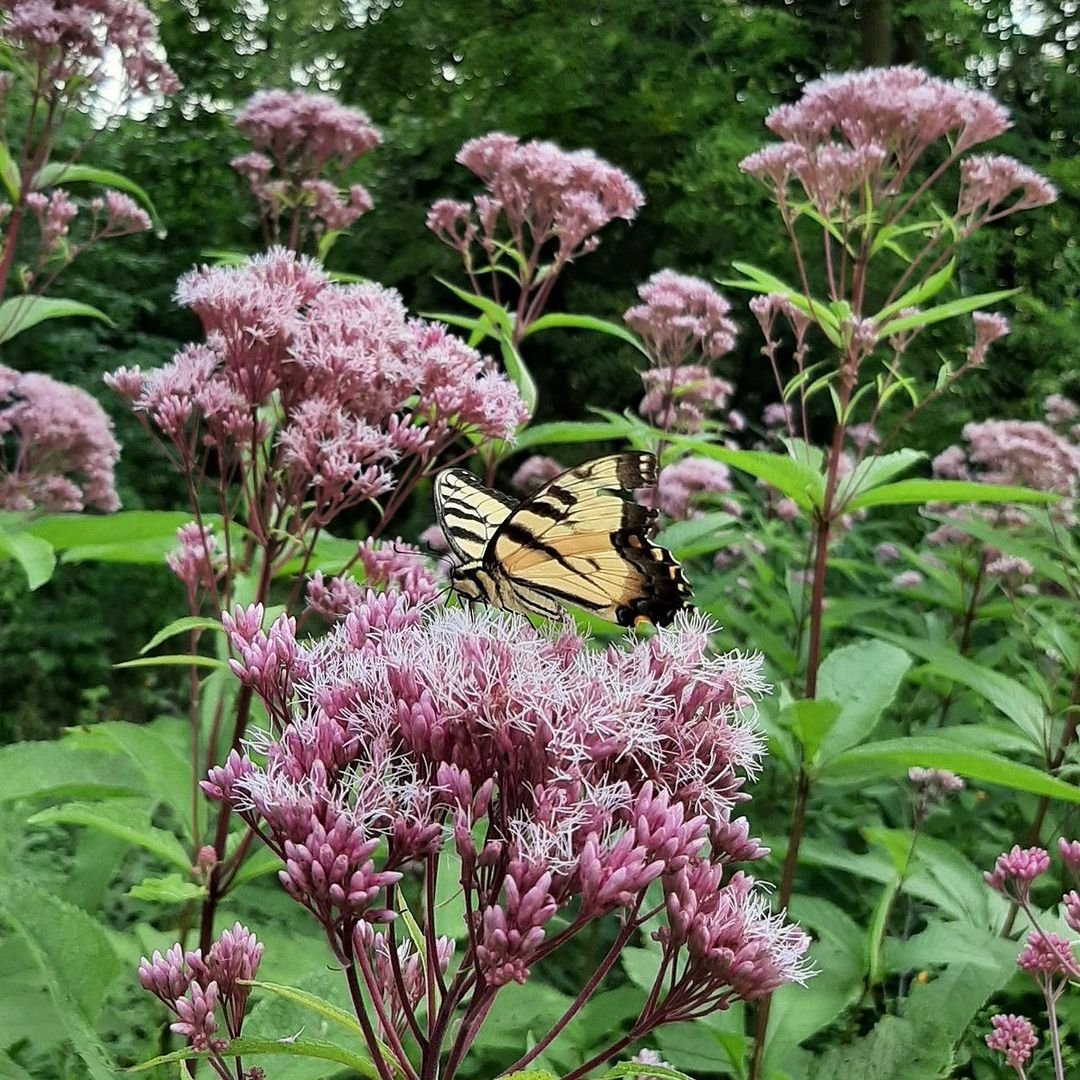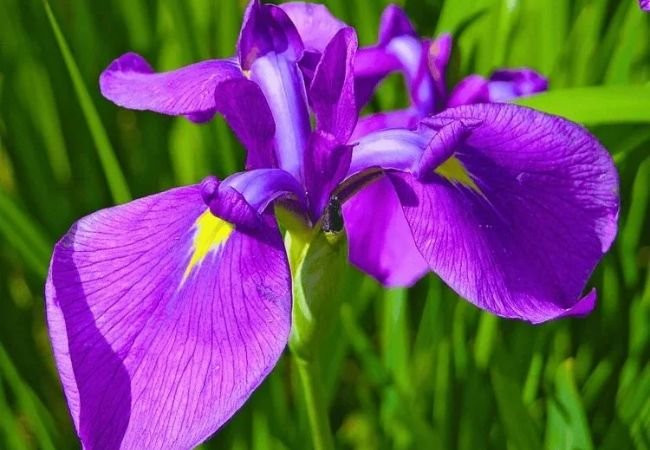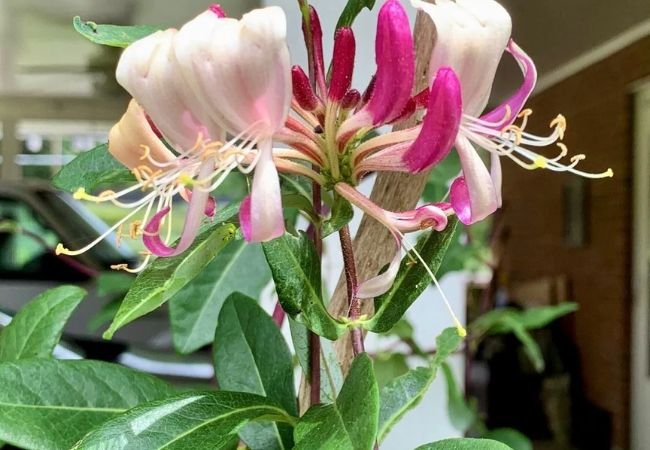Explore the majestic Joe-Pye Weed flower. Learn about its characteristics, growing tips, and ecological importance. Perfect for native plant enthusiasts and butterfly gardeners.
Joe-Pye Weed is a tall, impressive flower that catches the eye in late summer and fall. Despite its name, it’s not a weed but a valuable native plant. This article will explore the world of Joe-Pye Weed, its care, and why it’s a great addition to gardens.
Certainly! Here’s a chart with information about Joe-Pye Weed flowers:
| Aspect | Details |
|---|---|
| Botanical Name | Eutrochium purpureum (formerly Eupatorium purpureum) |
| Common Name | Joe-Pye Weed |
| Plant Type | Perennial |
| Hardiness Zone | Zones 4-9 |
| Sun Exposure | Full sun to part shade |
| Soil Type | Well-drained, moist, rich soil |
| Watering Needs | Moderate; prefers consistent moisture |
| Growth Habit | Upright, clumping |
| Height/Spread | 4-7 feet tall / 2-4 feet spread |
| Special Features | Tall, showy clusters of pink to purplish flowers, blooms in late summer to fall, attracts butterflies and other pollinators, deer-resistant, good for naturalized areas and borders |
What is Joe-Pye Weed?

Joe-Pye Weed, scientifically known as Eutrochium, is a group of flowering plants native to North America. These plants can grow quite tall, often reaching 5 to 7 feet or more. They have large clusters of small, pink or purple flowers that bloom in late summer.
Some common types of Joe-Pye Weed include:
- Spotted Joe-Pye Weed (Eutrochium maculatum)
- Hollow Joe-Pye Weed (Eutrochium fistulosum)
- Sweet Joe-Pye Weed (Eutrochium purpureum)
The United States Department of Agriculture provides detailed information about the Eutrochium genus.
Growing Joe-Pye Weed
Joe-Pye Weed is relatively easy to grow. Here are some tips:
- Sunlight: It grows best in full sun to partial shade.
- Soil: Joe-Pye Weed prefers moist, rich soil. It can even tolerate wet areas.
- Planting: Spring or fall are good times to plant Joe-Pye Weed.
- Water: Keep the soil consistently moist, especially when the plant is young.
- Space: Give these plants plenty of room to grow, as they can spread out.
The North Carolina State Extension offers comprehensive growing information for Joe-Pye Weed.
Caring for Joe-Pye Weed
To keep your Joe-Pye Weed healthy:
- Divide the plants every 4-5 years in spring to keep them vigorous.
- Cut back the stems to about 8 inches above the ground in late winter or early spring.
- Mulch around the plants to help retain moisture and suppress weeds.
- Joe-Pye Weed generally doesn’t need much fertilizer if planted in rich soil.
The University of Minnesota Extension provides detailed care instructions for Joe-Pye Weed.
Ecological Importance of Joe-Pye Weed
Joe-Pye Weed is more than just a pretty flower:
- For Pollinators: It’s a favorite of butterflies, bees, and other pollinators. The U.S. Forest Service offers information on gardening for pollinators.
- For Birds: The seeds provide food for birds in fall and winter.
- For Water: Its strong roots help prevent soil erosion near streams and wetlands.
- As a Native Plant: It supports local ecosystems better than many non-native plants.
The National Wildlife Federation explains the benefits of using native plants like Joe-Pye Weed in gardens.
Uses of Joe-Pye Weed
Joe-Pye Weed has several uses:
- In Gardens: It makes a striking backdrop in perennial gardens.
- For Bouquets: The flowers can be used in fresh or dried arrangements.
- Medicinal Uses: Historically, it was used in herbal medicine, though always consult a doctor before using any plant medicinally. The National Center for Complementary and Integrative Health provides information on herbal medicines.
- Rain Gardens: Its ability to tolerate wet conditions makes it great for rain gardens.
Interesting Facts About Joe-Pye Weed
Did you know?
- The plant is named after Joe Pye, a Native American healer who reportedly used the plant to treat typhus.
- Monarch butterflies often visit Joe-Pye Weed during their fall migration.
- The hollow stems of some species were used by Native Americans to make flutes.
- Despite its size, Joe-Pye Weed rarely needs staking, even in windy areas.
The Smithsonian Gardens offers interesting insights into various plants, including native species like Joe-Pye Weed.
Joe-Pye Weed is a remarkable plant that offers beauty, ecological benefits, and historical interest. Whether you’re creating a butterfly garden, looking for a striking background plant, or interested in native species, Joe-Pye Weed is worth considering. Its tall stature, attractive flowers, and value to wildlife make it a standout choice for many gardens.
For more information on native plants and their care, visit the United States Botanic Garden website.
Remember, while Joe-Pye Weed is generally easy to grow, it’s always best to consider your specific climate and garden conditions. Don’t hesitate to consult local gardening experts or native plant societies for advice tailored to your area. Happy gardening!
For more gardening tips and plant care guides, visit usagardenhub.com.






